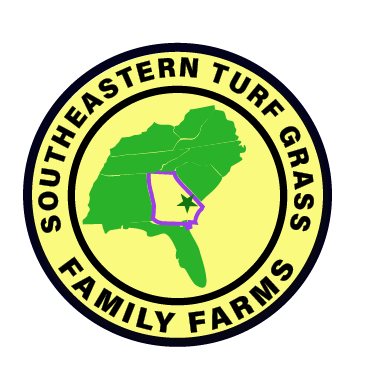FAQ
Common Facts & Questions
Is Cutting a Lawn Using the 1/3 Rule True
Reach out to our team for more information!
Sustainable Farmin: the important aspects of growing sod grass
Living as a sod farmer in Georgia presents both challenges and rewards, characterized by year-round dedication and hard work. Sod farmers specialize in cultivating various types of turf grasses, which are essential for landscaping, commercial purposes, and recreational spaces. The selection of grass types largely depends on the farmer's expertise and knowledge of which varieties thrive best in Georgia's climate, soil conditions, and market demands.
Turf grasses come in different species, including Bermuda, Zoysia, Tall Fescue, and Centipede grass, each with unique qualities that cater to specific applications. For instance, Bermuda grass is renowned for its durability and heat tolerance, making it an ideal choice for sports fields and high-traffic areas. Conversely, Zoysia grass is favored for its dense growth and resistance to pests, making it an excellent choice for residential lawns.
Successful sod farming requires a deep understanding of agronomy, pest management, and irrigation practices. Farmers must closely monitor soil quality, water availability, and weather conditions to optimize crop growth and maintain their crops' health. Additionally, they must be aware of market trends and consumer preferences to select grass varieties that are in high demand.
Sod farming not only enhances the aesthetic appeal of residential and commercial landscapes but also plays a vital role in promoting environmental sustainability. Healthy turfgrasses improve air quality, reduce erosion, and provide habitats for wildlife. Moreover, they act as natural cooling systems, thereby contributing to the reduction of urban heat.
In conclusion, the role of a sod farmer in Georgia is one of immense responsibility and expertise. By selecting the right grass varieties, implementing sustainable farming practices, and staying attuned to market trends, farmers can ensure the successful cultivation of turfgrass that meets the diverse needs of their customers. This dedication not only supports the local economy but also enhances the quality of life in the communities they serve.
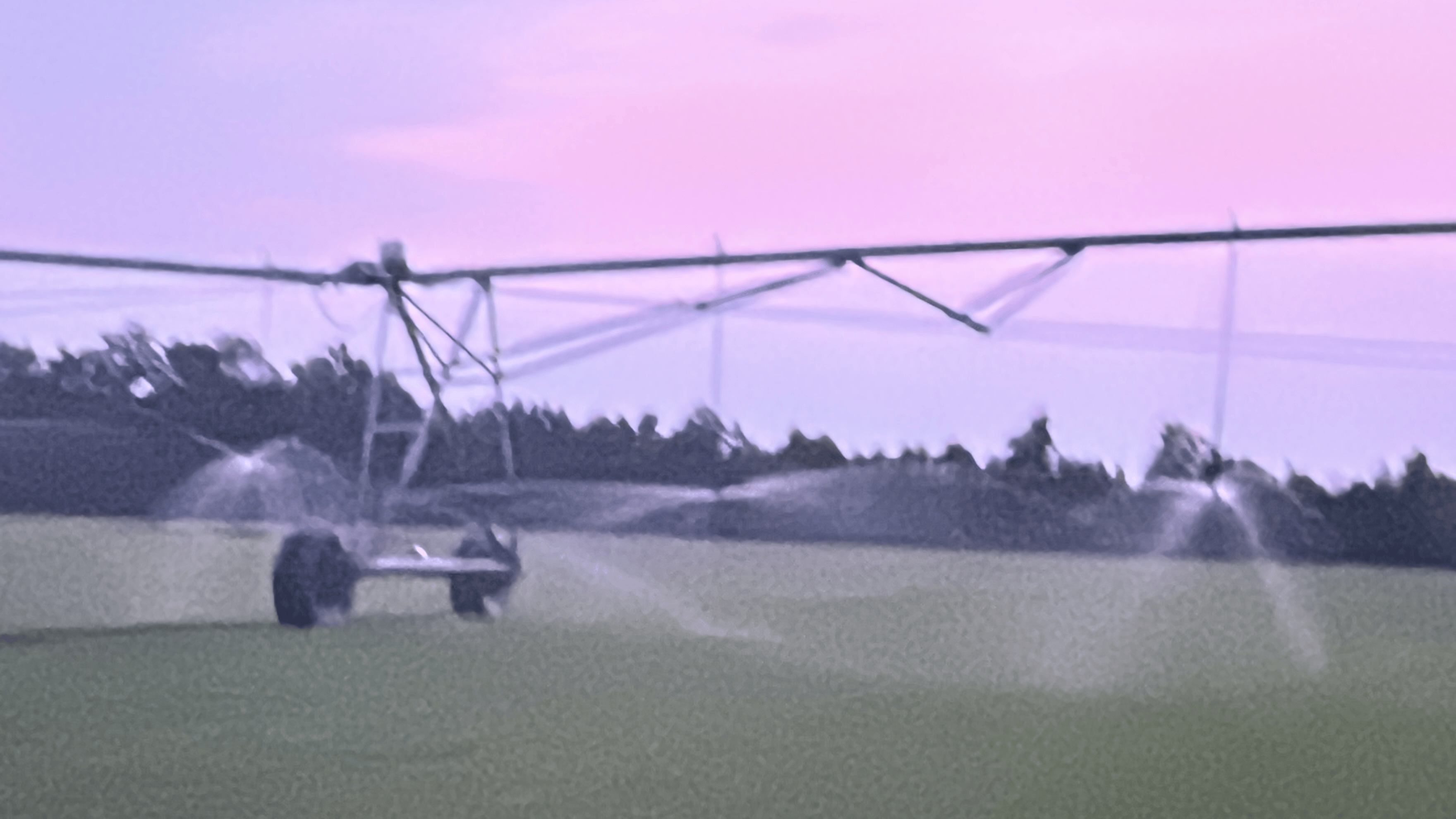
large sod field
Stock Grass growing
Is sod better than grass?
When considering whether sod is better than grass seed, it’s essential to understand the distinct advantages and disadvantages of each option. As a CEO and farmer, I believe in making informed decisions based on different angles of the subject.
Sod, which consists of pre-grown grass with its root system intact, provides immediate coverage and aesthetic appeal. It establishes quickly, reducing the risk of erosion and weed invasion. Homeowners seeking a lush, green lawn from the outset often find sod to be the most satisfactory choice. Additionally, sod can typically withstand various weather conditions better in its initial stages than newly seeded grass, which remains vulnerable until it becomes well-established.
On the other hand, grass seed offers a cost-effective solution for larger areas or when budget constraints are a concern. The selection of grass types allows for customizable options tailored to specific climates, soil conditions, and personal preferences. While grass seed takes longer to germinate and establish, modern seed mixtures often include varieties engineered for faster growth and hardiness.
In summary, the choice between sod and grass seed ultimately hinges on your immediate landscaping needs, budget, and long-term lawn care goals. If you’re looking for instant gratification and a luxurious look, sod is the superior option. Conversely, if you prioritize cost-effectiveness and variety, grass seed may be the better path forward. Please make your decision based on careful consideration of these factors and align it with your overall vision for the landscape.
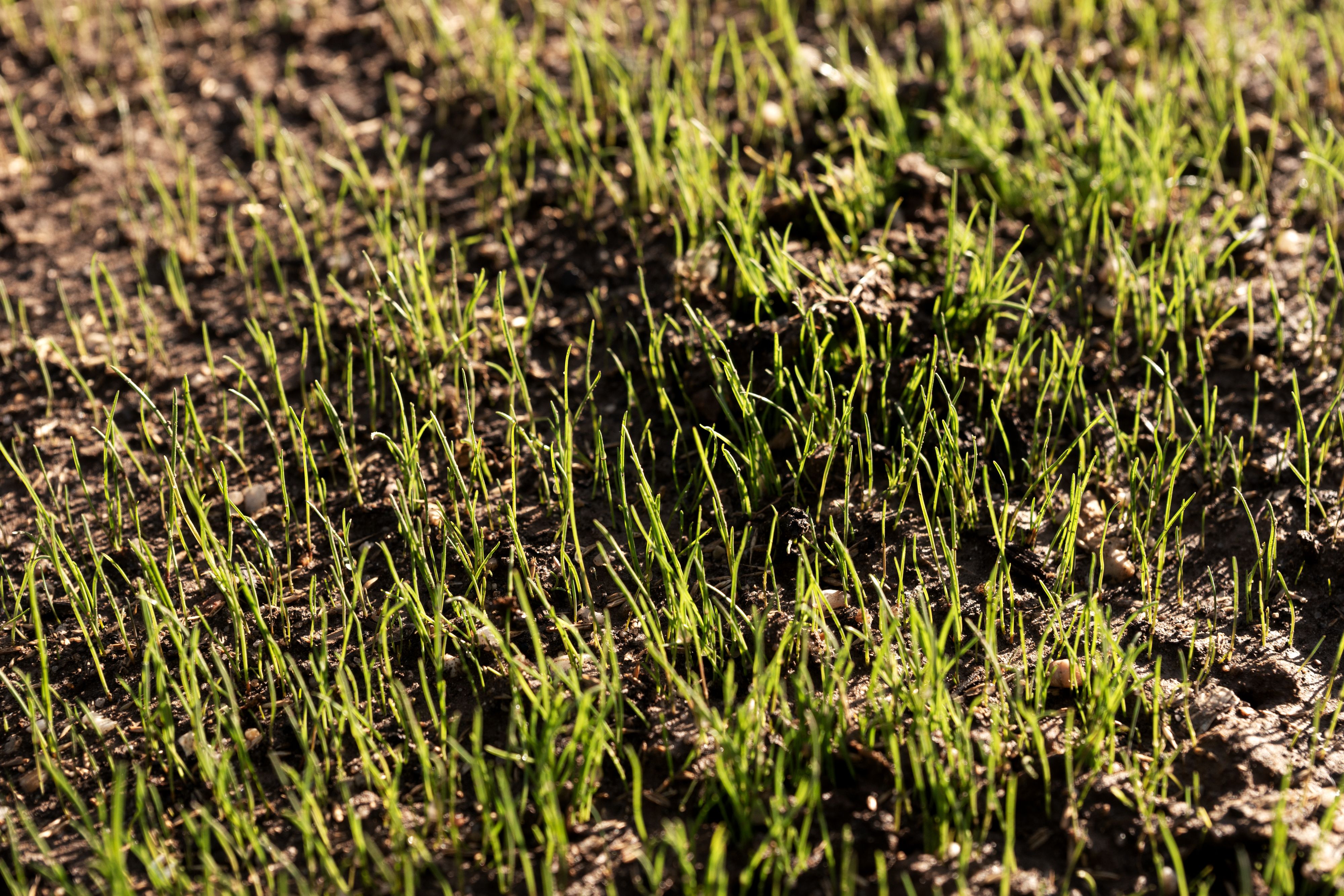
still of new growing grass
Do You Offer Installation?
Yes! We can supply, prepare the soil, and provide installation. Call with any questions.
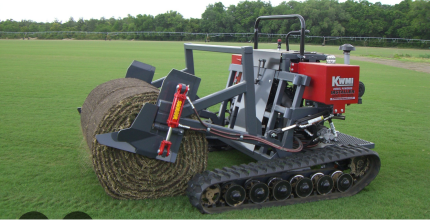
rolling sod onto a new surface
Can I Purchase Sod Without the Installation?
Yes, you can! Just let us know where and when you need your sod! You can drive to the farm to pick the grass up, or we can deliver it to you. We carry pallets and mini rolls. Both are the same square footage, 500 sq ft. The mini rolls weigh between 75 lbs. - 100 lbs. each. Just make sure you or someone there can lift and carry the rolls to the installation area.
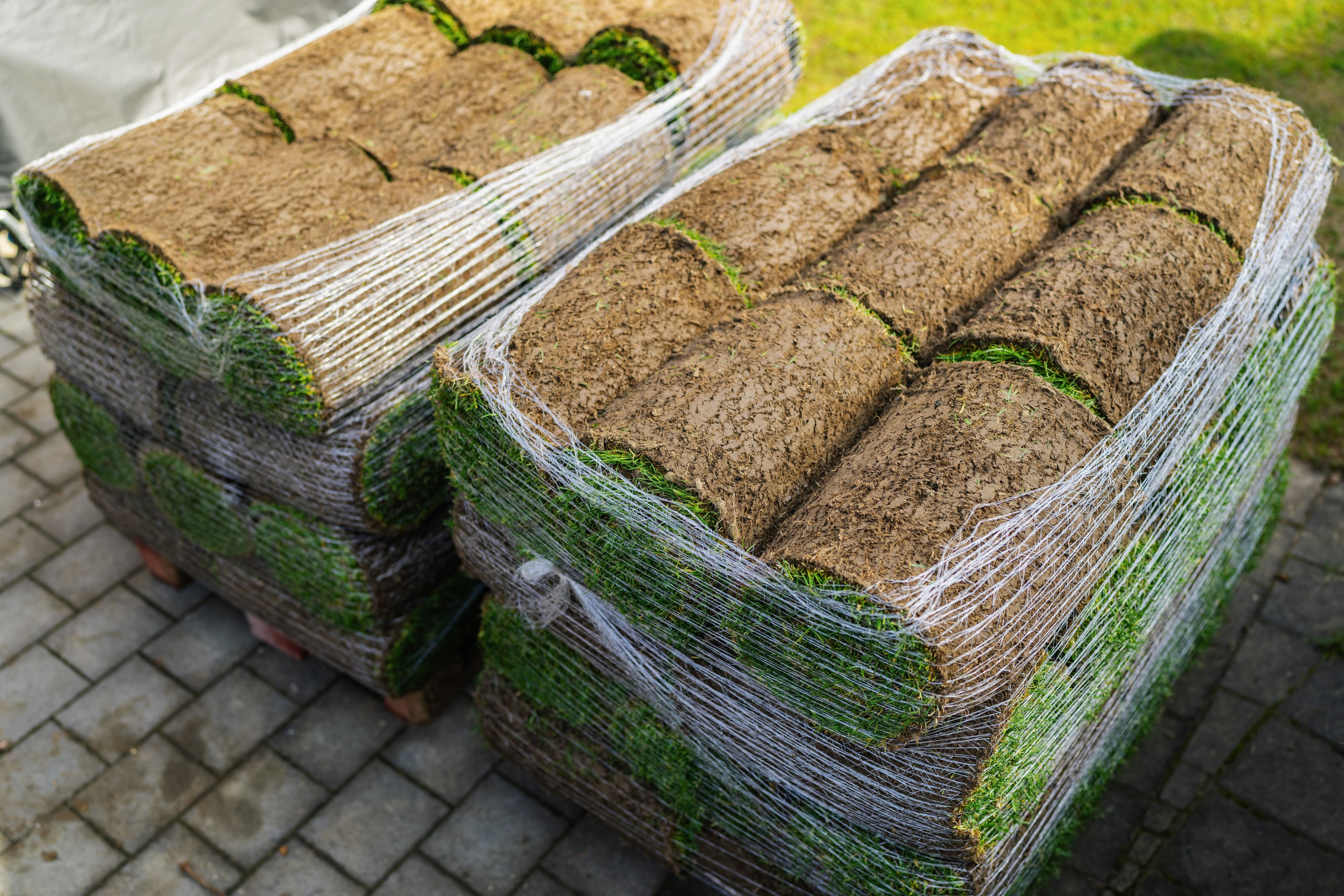
Mini rolls
Sod can be harvested in a few forms. Squares of Pallets and mini rolls are two types of harvesting that homeowners often use for their lawn projects.
How Many Pallets Fit on a Truck?
Great question. Often, we ship combinations of rolls, mini rolls, and pallets. If no additional equipment is required, 20 pallets of sod will fit on our trailers. As an aside, for the large 42" rolls, they are a total of 350 sq ft. Although large, 28 rolls fit onto the same flat bed trailer!
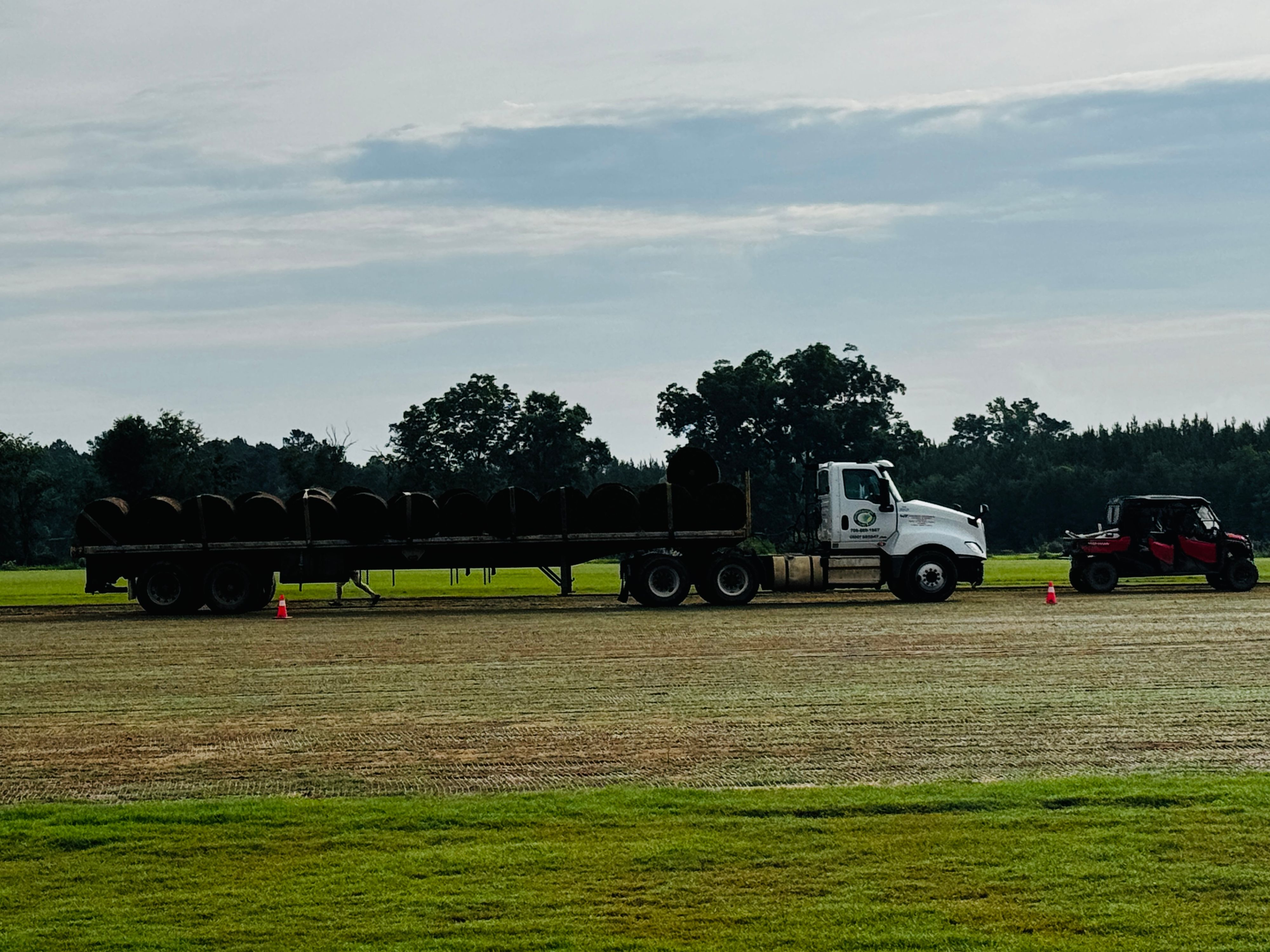
truck with large rolls.
How Many Square Feet Does a Pallet of Sod Cover?
Pallets of squares, 2.66 sqft that are placed onto a wooden pallet cover somewhere between 400 <> 500 sq ft. It is very important to ask any dealer, farmer, or sod broker how many sq ft are on the pallets you wish to purchase. Southeastern Turf Grass fills our pallets to 500 sq ft.
Can I Pick Up My Sod at Your Location?
Absolutely, we would love it if you stopped by!
How Long Does it take to Sod take Root?
Sod typically takes about 2 to 4 weeks to fully root, depending on several factors such as the type of grass, environmental conditions, and the care provided during the establishment period. Please look at our blog on this very topic!
